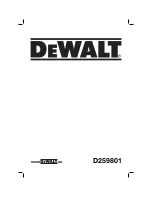
Pre-EPA07 Exhaust System
1.
On all vehicles, check the condition of the muffler
body and the top stack. Check the inlet/outlet
tubes for leakage, dents, and corrosion, and
check for holes in the muffler. Replace parts as
required. Use new parts, equivalent to parts
originally installed on the vehicle.
2.
Inspect the exhaust flex hose (see
Fig. 6
) for
leakage, wear, or damage. Replace with new
parts if replacement is needed.
3.
Check for leakage at the V-band coupling, which
attaches the exhaust pipe to the turbocharger
exhaust outlet. See
Fig. 6
.
4.
If leakage exists, tighten the nut on the V-band
coupling 85 lbf·in (940 N·cm). If leakage persists,
install a new V-band coupling.
5.
Inspect the turbo outlet pipe, and replace it as
needed.
6.
Check the U-bolt clamps for tightness, and
tighten as needed.
7.
Check the isolator at the base of the exhaust
stack elbow(s) (see
Fig. 7
), for cracking, dam-
age, and dry rot. Replace as needed.
8.
Check for leakage at all wide-band exhaust
clamps. See
Fig. 8
.
If leakage exists, tighten the nuts 40 to 60 lbf·ft
(54 to 81 N·m). If leakage persists, inspect the
sealclamps. If necessary, install a new wide-band
exhaust clamp.
09/16/2009
f490354
1
2
3
4
5
6
7
8
9
10
11
1.
DPF Inlet Temperature Sensor
2.
DOC Inlet Temperature Sensor
3.
DOC Inlet Pressure Sensor
4.
DPF Sensor Box
5.
DPF Outlet Pressure Sensor
6.
DPF Outlet Temperature
Sensor
7.
DPF Outlet NOx Sensor
8.
SCR Inlet Temperature Sensor
9.
SCR Outlet Temperature
Sensor
10. SCR Sensor Box
11. SCR Outlet NOx Sensor
Fig. 3, 2HV Two-Box ATS Sensor Locations
Exhaust
49
Cascadia Maintenance Manual, November 2015
49/5











































